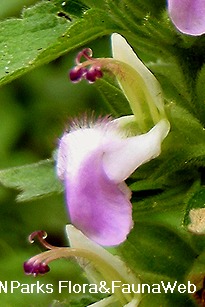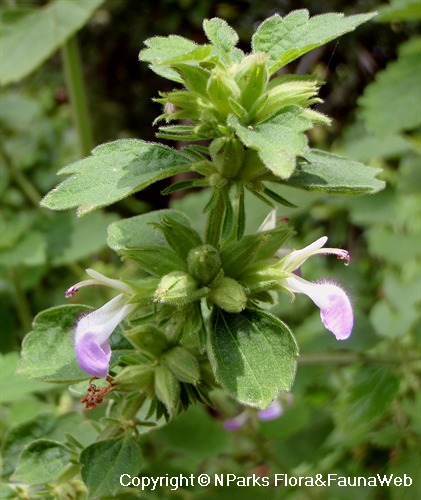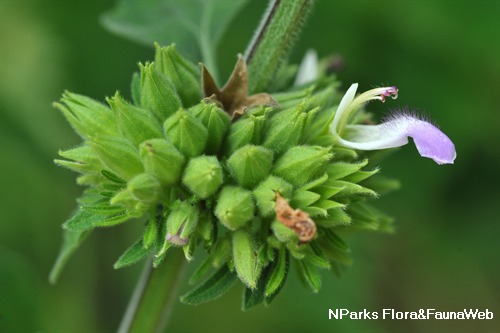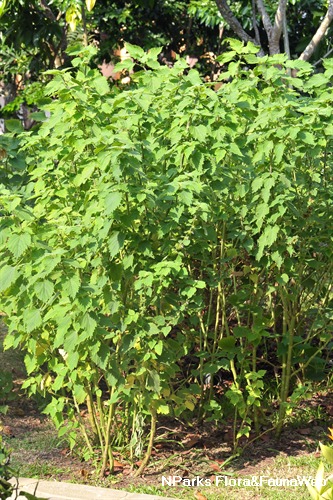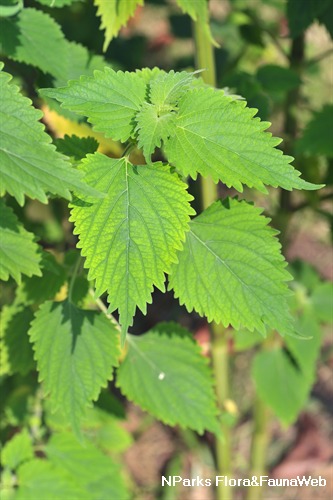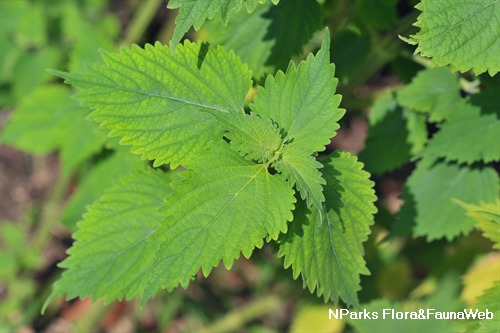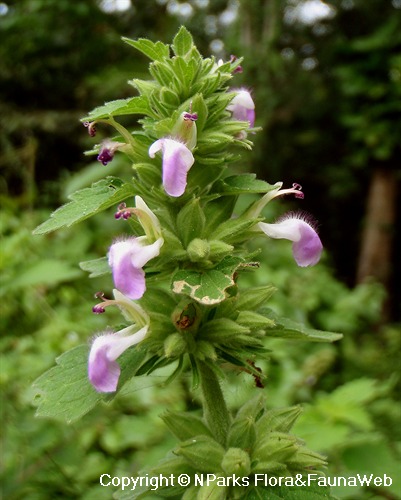
Back
Anisomeles indica (L.) Kuntze
| Family Name: | Lamiaceae (Labiatae) |
| Synonyms: | Marrubium indicum, Ballota , Nepeta disticha, Nepeta indica, Acrymia indicus, Anisomeles tonkinensis, Anisomeles albiflora, Anisomeles disticha, Epimeredi secundus, Monarda zeylanica |
| Common Name: | Catmint, Indian Catmint, Malabar Catmint, Kabling-Parang, Chodhara, 广防风, 鱼针草, 金剑草 |
Name
Classifications and Characteristics
| Plant Division | Angiosperms (Flowering Seed Plants) (Dicotyledon) |
|---|---|
| Plant Growth Form | Herbaceous Plant |
| Lifespan (in Singapore) | Perennial |
| Mode of Nutrition | Autotrophic |
| Plant Shape | Shrubby |
| Maximum Height | 1 m to 1.5 m |
Biogeography
| Native Distribution | Indian subcontinent, China, Taiwan, Japan (Ryukyu Islands), Indochina, Philippines, Malaysia, Indonesia, Papua New Guinea |
|---|---|
| Native Habitat | Terrestrial (Disturbed Area / Open Ground) |
| Preferred Climate Zone | Tropical, Sub-Tropical / Monsoonal, Temperate |
Description and Ethnobotany
| Growth Form | Upright, camphor-scented, herbaceous perennial shrub, up to 1.5m height. |
|---|---|
| Foliage | Leaves green, strigose (covered by large bristle-like coarse hairs) above, especially along veins; finely tomentose and whitish below. Margins unevenly crenate (round-toothed). 4 longitudinal veins arise from single point at base of leaf. |
| Stems | 4-sided with squarish cross-sections, densely covered by white hairs. |
| Flowers | Pinkish-purple, densely pubescent, almost stalkless, with prominent lower lip. Up to 20 flowers produced in axillary verticillastrate clusters -- resembling false whorls, but actually consisting of 2 crowded clusters arising from opposite leaf axils. Flowers not long-lasting but buds open progressively. Visited by pollinator bees, sunbirds and insects for nectar and pollen. Blooming takes place periodically. |
| Fruit | Nutlets one-seeded, ovoid, 1.8mm across, glossy black when ripe, produced from 4-lobed flower ovary, dispersed by birds. |
| Others - Plant Morphology | Local Conservation Status: Indicated as extinct in the wild in the Singapore Red Data Book 2004, but more recently described as a ""weed of uncertain origin" by NUS-Raffles Museum of Biodiversity (Nov 2009). Species does not appear to be commonly sighted in Singapore, eg. only 1 known location in Pulau Ubin. |
| Habitat | Forest margins, forest clearings, border of thickets, roadsides, open ground and waste areas. |
| Cultivation | Tolerant of infertile soils. Propagate by seeds and stem cuttings. |
| Etymology | Genus epithet 'Anisomeles' derived from Greek terms for 'unequal' and 'limb' or 'member', a reference to the unequally-sized petals, or describing the flower anthers (upper pair are single-celled, while lower pair are two-celled). Species epithet 'indica' means 'of or from India', referring to where the species is distributed. |
| Ethnobotanical Uses | Food (Herb or Spice) Others: Medicinal: Whole plant decocted and consumed in folk medicine to treat rheumatism, arthritis, bone pains, abdominal cramps, stomach gas and intermittent fever. Leaf juice fed to children to relieve colic and teething fever. Leaves are bitter-tasting and chewed to treat toothaches. Fresh or dried leaves made into a wash for ezema and other skin problems. Stems and leaves boiled into syrup and drunk to protect digestive system, and as pain relief. Vapour from hot infusion inhaled to induce perspiration. Studies indicate that leaves and stems of pre-flowering plants possess anti-inflammatory, analgesic, antioxidant and gastroprotective properties. Dried preparations can be found in traditional Chinese medical halls. Products: Whole plant burnt as mosquito repellent. Recent research shows that leaf and root powder applied as mulch exhibits inhibitory effect against weeds, and has potential usage as natural herbicide. |
Landscaping Features
| Desirable Plant Features | Ornamental Flowers, Fragrant (Flowers, Foliage) (Time Independent, Day) |
|---|---|
| Landscape Uses | General |
| Thematic Landscaping | Economic Garden, Naturalistic Garden |
Plant Care and Propagation
| Light Preference | Full Sun |
|---|---|
| Water Preference | Moderate Water |
| Plant Growth Rate | Moderate |
| Rootzone Tolerance | Fertile Loamy Soils, Well-Drained Soils |
| Maintenance Requirements | Moderate |
| Propagation Method | Seed, Stem Cutting |
Foliar
| Foliage Retention | Evergreen |
|---|---|
| Mature Foliage Colour(s) | Green |
| Mature Foliage Texture(s) | Velvety / Furry / Tomentose, Hairy / Hirsute, Raised / Sunken Veins |
| Foliar Type | Simple / Unifoliate |
| Foliar Shape(s) | Non-Palm Foliage (Ovate) |
| Foliar Venation | Pinnate / Net |
| Foliar Margin | Serrate / Toothed, Dentate, Crenate |
| Foliar Apex - Tip | Acute, Acuminate |
| Foliar Base | Cuneate, Truncate / Square |
| Typical Foliar Area | Mesophyll ( 45cm2 - 182.25 cm2 ) |
| Leaf Area Index (LAI) for Green Plot Ratio | 4.5 (Shrub & Groundcover - Dicot) |
Non - Foliar and Storage
| Stem Type & Modification | Herbaceous |
|---|---|
| Root Type | Underground (Fibrous Root) |
Floral (Angiosperm)
| Flower & Plant Sexuality | Bisexual Flowers |
| Flower Colour(s) | Pink, Purple |
|---|---|
| Flower Symmetry | Bilateral |
| Inflorescence Type | Raceme |
| Flowering Habit | Polycarpic |
Fruit, Seed and Spore
| Mature Fruit Colour(s) | Black |
|---|---|
| Fruit Classification | Simple Fruit |
| Fruit Type | Indehiscent Dry Fruit , Nut / Nutlet |
Image Repository
Others
| Master ID | 374 |
|---|---|
| Species ID | 1670 |
| Flora Disclaimer | The information in this website has been compiled from reliable sources, such as reference works on medicinal plants. It is not a substitute for medical advice or treatment and NParks does not purport to provide any medical advice. Readers should always consult his/her physician before using or consuming a plant for medicinal purposes. |

